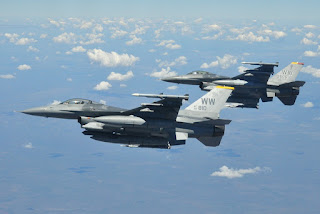The KC-30A Tanker is flown by 33 Squadron based at RAAF Base Amberley. The Squadron is responsible for aerial refuelling and long-range passenger transport and is controlled by No. 86 Wing, which is part of Air Mobility Group. 33 squadron currently operates five Airbus A330-203 / KC-30A Multi Role Tanker Transport (MRTT) aircraft.
A39-001 was the first to be built in March 2006 and over the following years, the aircraft was used by the EADS (Airbus) Conversion & Modification Centre in Spain to build, install and test the air-to-air refuelling equipment (boom, hose-and-drogue units, plus electronics). The remaining aircraft were converted by QANTAS Defence Services in Brisbane. The first KC-30A entered service in June 2011. Two more are due for delivery in 2018 which will bring the total number aircraft to seven.
The aircraft are crewed by pilots, refuelling operators and flight attendants. Internally, you could be forgiven for thinking that you had just boarded a regular Airbus A330. The interior is fitted out just like a regular civilian aircraft. The RAAF’s KC-30A can seat up to 270 passengers in a 2 class configuration.
Air-to-air refuelling is considered a force multiplier, permitting the RAAF to increase the range and loiter time of its aircraft. The ability to refuel in flight also enables aircraft to take off with more ordinance than they might otherwise.
Departing RAAF Base Darwin, "Dragon 21", met up and refuelled seven General Dynamics F-16CM Vipers (Fighting Falcons) of the United States Air Force (USAF) / U.S. Pacific Air Forces (PACAF) 14th Fighter Squadron - nicknamed the ‘Samurais’ - which are based at Misawa Air Base in Japan.
The 14th FS fly the upgraded F-16CM Viper (previously known as the Block 40 F-16CG and Block F-16CJ variants) built between 1990 and 1992. Of interest, their deployment from Misawa to Darwin was a new experience as it was the first time a USAF KC-10A or KC-135R equipped Aerial Refuelling Squadron did not deploy with the unit to support the 14 F-16Cs.
Instead, for the first time outside of the test environment, the USAF partnered up with a RAAF KC-30A tanker, flying non-stop with seven 14th FS F-16Cs from Kadena AFB in Japan to Darwin in a little over six hours. This process was repeated, resulting in 14 jets and 175 personnel , as well as support gear, being deployed in three days.
To refuel the USAF F-16Cs, the RAAF KC-30A used its 18-metre-long Advanced Refuelling Boom System (ARBS), controlled by an Air Refuelling Operator at a station located in the KC-30A’s flightdeck using fly-by-wire controls and 3-D glasses.
 |
| CPL Glen McCarthy / Defence image |
Initially, four Vipers formed up together on the port side of the KC-30A before flying one-by-one behind the KC-30A for refuelling. The ARBS 'plugs' into a fuel receptacle on the F-16C and refuelling takes place. The F-16Cs then re-formed on the starboard side of the KC-30A before departing back to the Exercise area.
The whole process was then repeated with another three 14th FS F-16Cs.
A little later in the flight, "Dragon 21" met up with a pair of Boeing F/A-18F Super Hornets from Number 1 Squadron also based at Amberley.
The Super Hornets were refuelled by the KC-30's pair of all-electric refuelling pods that are mounted underneath each wing. These pods unreel a hose-and-drogue system to refuel the probe-equipped aircraft. These systems are also controlled by an Air Refuelling Operator in the flightdeck.
Like the USAF F-16Cs, the RAAF Super Hornets again joined the KC-30A on the port side before they each joined the hose-and-drogue system on each side of the tanker.
Refuelling complete, both Super Hornets positioned off the starboard side wing before also departing back to the battlefield.
"Dragon 21" then returned to RAAF Base Darwin with what seemed to be a fairly rapid descent from flight levels - certainly in comparison to other commercial flights. All up, we were in the air for a little over three hours.
 |
| CPL Casey Gaul / Defence image |
All in all, it was a very unique and privileged experience, something that I am truly privileged to have been a part of. Our thanks must again go to Squadron Leader Briggs from RAAF Media Operations for the opportunity provided to us to view these capabilities up close and to gain a better understanding of their role in Pitch Black 2016 and in domestic and international military operations.


















































No comments:
Post a Comment